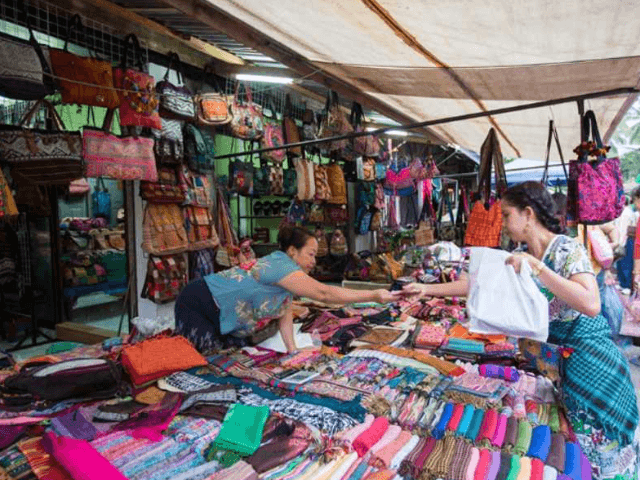Wat Wisunarat is the temple with the oldest history in Luang Prabang, built in 1513. If you are a lover of spiritual tourism, when traveling to Laos, don't miss Wisunarat!
TABLE OF CONTENTS
1
2
Introducing Wat Wisunarat
3
History of Wat Wisunarat
4
How to get to Wat Wisunarat?
5
Wat Wisunarat is located next to Wat Aham on Thanon Wisunalat in Luang Prabang so it is very easy to walk to. Depending on the distance, you can take a tuk tuk to the temple.
6
Architecture of Wisunarat Pagoda Laos
7
Highlights at Wat Wisunarat
Dalianhua Stupa
The Sim (Mission Hall)
8
Note when going to Wat Wisunarat
9
Attractions near Wat Wisunarat
Wat Xieng Thong
Royal Palace Museum
Built between 1904 and 1909, the Royal Palace Museum features a combination of Lao and French architectural styles, eventually completed to a more appropriate Lao design by King Sisavangvong. In the past, the Royal Palace Museum used to be the Royal Palace of the Kingdom of Laos.
Phousi Mountain
Kuangsi Waterfall
Introducing Wat Wisunarat
Wisunarat Temple dates back to 1513 and is named after King Wisunarat (Visoun), who ruled Laos from 1501 to 1520. It is the oldest Buddhist temple in Luang Prabang and was once the Museum of Religious Art. You can see religious artifacts and precious items related to Buddhism and royalty at this temple.
Inside the temple there are several gilded Buddha statues and ancient stones dating back to the 15th century. The stones were donated by Prince Phetsarat after the invasion of the Black Haw robbers.

History of Wat Wisunarat
Dating back to 1513 during the reign of King Wisunarat (Visoun), Wat Wisunarat is Luang Prabang's oldest temple and was once the place to worship the Prabang Buddhas. It was first built of wood but was later burned by troops riding black Haw horses in 1887. This army was part of the Black Flag military rebel group led by a Chinese commander in the late 1880. After the invasion, the pagoda was rebuilt with stucco and bricks, while retaining some of the original architecture including a stupa created in 1503 along with several other small Buddha icons although many icons were stolen during Haw's raid.
Over the years, the Wat Wisunarat has also functioned as a Museum of Religious Art and is now home to a wide range of religious artefacts and precious items related to both Buddhism and royalty. The temple is a tribute to early Lao architecture with wooden windows that mirror Wat Phou in the south of the country along with stucco work that echoes the classical style of Luang. Restoration work was carried out in 1895 and then again in 1932.
.png)
How to get to Wat Wisunarat?
Wat Wisunarat is located next to Wat Aham on Thanon Wisunalat in Luang Prabang so it is very easy to walk to. Depending on the distance, you can take a tuk tuk to the temple.
Architecture of Wisunarat Pagoda Laos
A highlight of Wat Wisunarat that cannot be forgotten is the European-style roof, an architectural style not quite common in Laos. The main hall of the temple was rebuilt during the reign of King Sakkarin Kamsuk (1894-1903). At that time, the kingdom was placed under French protection as a constituent kingdom of French Indochina. So the modern Western style was brought to Laos and influenced the temple's architecture.
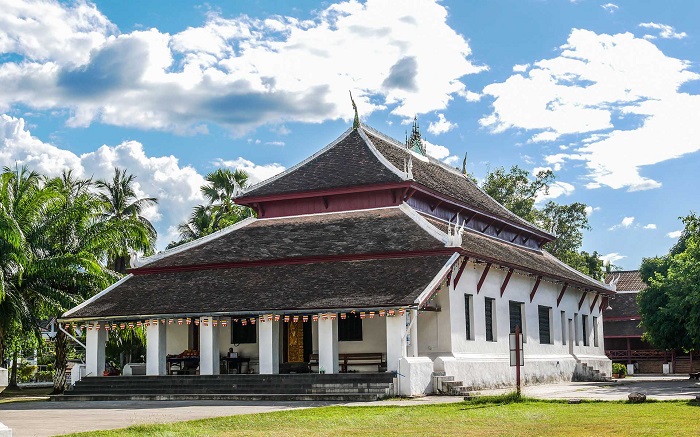
Highlights at Wat Wisunarat
Dalianhua Stupa
The main attraction of Wat Wisunarat is the Stupa of Great Lotus (Dalian Flower Stupa or Watermelon Stupa) built in the 16th century. The 34.5 meter high Sinhalese-style stupa is the only one of this type in Laos. The stupa is also called Watermelon Stupa by locals because its dome resembles a watermelon.
This ancient structure was built as part of the original temple complex, believed to protect a powerful Buddhist relic. Now, the stupa is the only original structure that survived the Black Flag army attacks on the temple, making it one of the oldest structures in Luang Prabang.
The interior of the stupa was once filled with small Buddha statues made of precious materials and other sacred objects, many of which were stolen or destroyed during the Black Haw raid. Some remaining Buddha statues are kept in the Royal Palace Museum and others are kept and displayed in the temple hall.
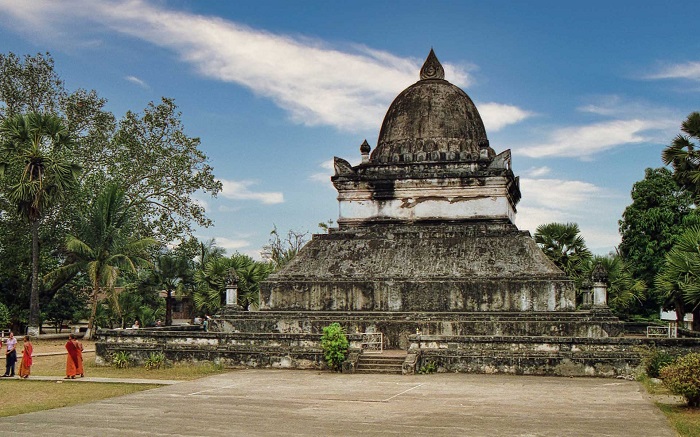
Read more: Traveling to Laos - Can't miss the unique festivals
The Sim (Mission Hall)
The mission hall of Wat Wisunarat is a brick structure with wooden doors decorated with carvings depicting the Hindu gods Vishnu, Brahma, Indra and Shiva on his mount Nandi bull. Inside the main hall area is a small collection of ancient stone and gilded Buddha statues dating from the 15th century. Among these is one of the city's largest standing Buddhas in the Luang Prabang style.
Entering the hall, you can see a few information boards in both Lao and English explaining the history and symbolism of the Buddha statue collection. It helps to explore the different postures of Buddha statues and the significance of different artistic influences on the design of the statues.
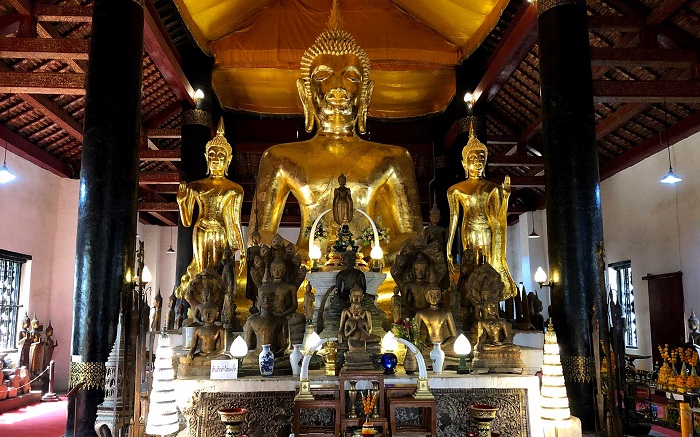
Note when going to Wat Wisunarat
When visiting Wat Wisunarat, cover up from shoulders to knees, take off hats and shoes. Avoid touching monks or any relics. Try not to make noise during your visit.
Opening hours: Daily from 8:00 am to 5:00 pm
Entrance fee: 20,000 Kip (2.5 USD)
Attractions near Wat Wisunarat
Wat Xieng Thong
Built by order of King Setthathirath in 1560, Wat Xieng Thong is a fine example of traditional Lao temple style with its two-tiered swept roof and ornate mosaics, notably beautiful 'tree of life' glass painting on the back wall of the temple. Wat Xieng Thong is considered the most beautiful and important among many other elaborately decorated temples in Luang Prabang. At the pagoda, there are many golden statues, statues of gods, and intricately carved reliefs recounting many sacred Buddha relics.
In the past, the temple was used to hold the coronation ceremonies of Lao kings. This is also the city gate, where the Royal Family officially departs and arrives. Today, Wat Xieng Thong has become a main venue for organizing important annual festivals in the ancient capital of Laos.

Royal Palace Museum
Built between 1904 and 1909, the Royal Palace Museum features a combination of Lao and French architectural styles, eventually completed to a more appropriate Lao design by King Sisavangvong. In the past, the Royal Palace Museum used to be the Royal Palace of the Kingdom of Laos.
In 1975, the monarchy was overthrown by communists and the palace was converted into a museum, where artifacts about Laos' history from many centuries ago were displayed. There is a 71m high ancient Buddha statue and a room containing gifts for foreign kings located here.
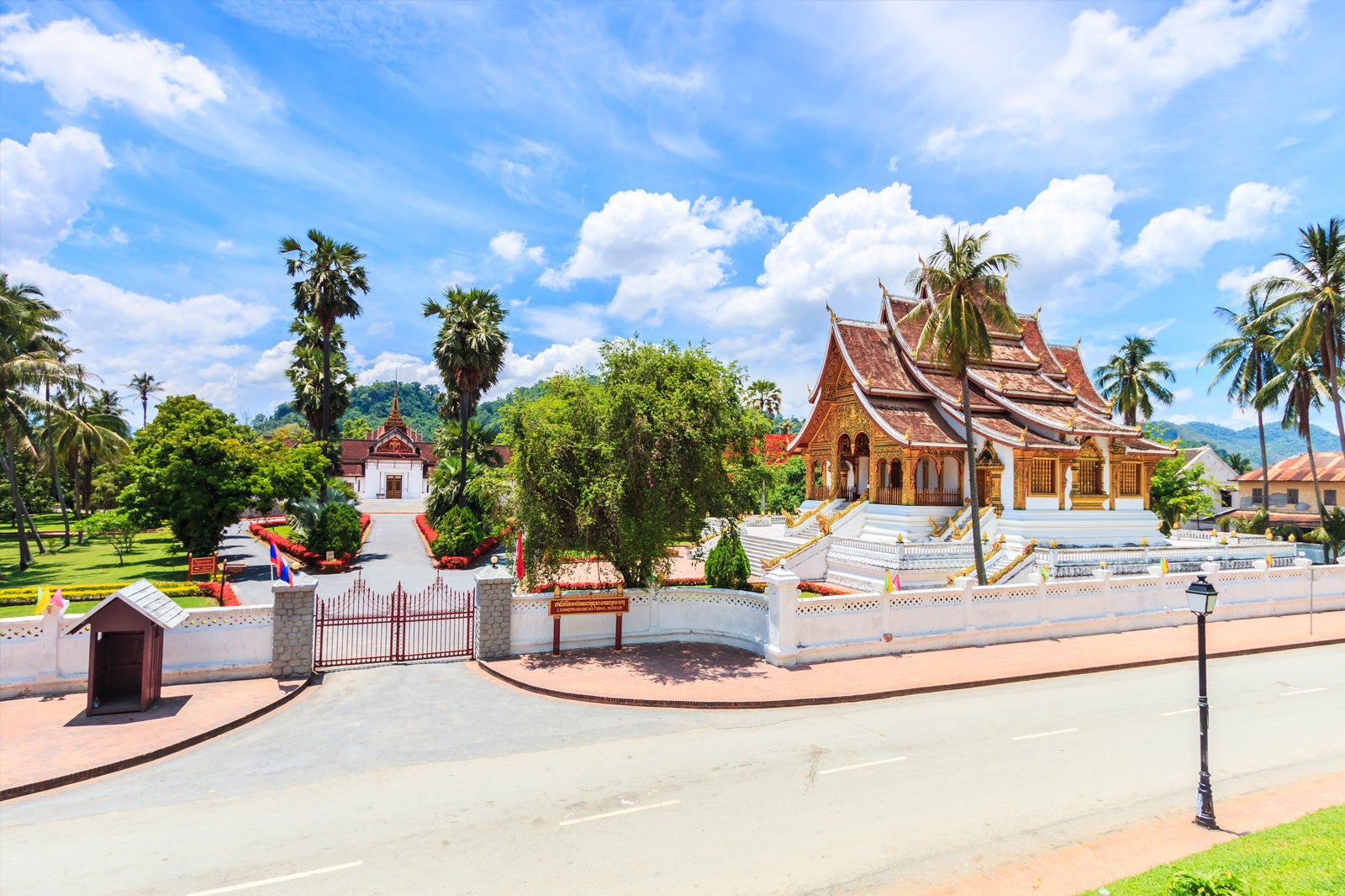
Phousi Mountain
Considered the sacred hill of Luang Prabang, Mount Phousi is one of the most revered sites in Luang Prabang. It offers a stunning panoramic view of the city and the captivating landscape that surrounds it when climbing to the top. At the top of the mountain there are several notable temples such as Wat Tham Phousi with its large reclining Buddha statue and Wat Chomsi. Be prepared in good health to conquer the hill with 329 steep steps.
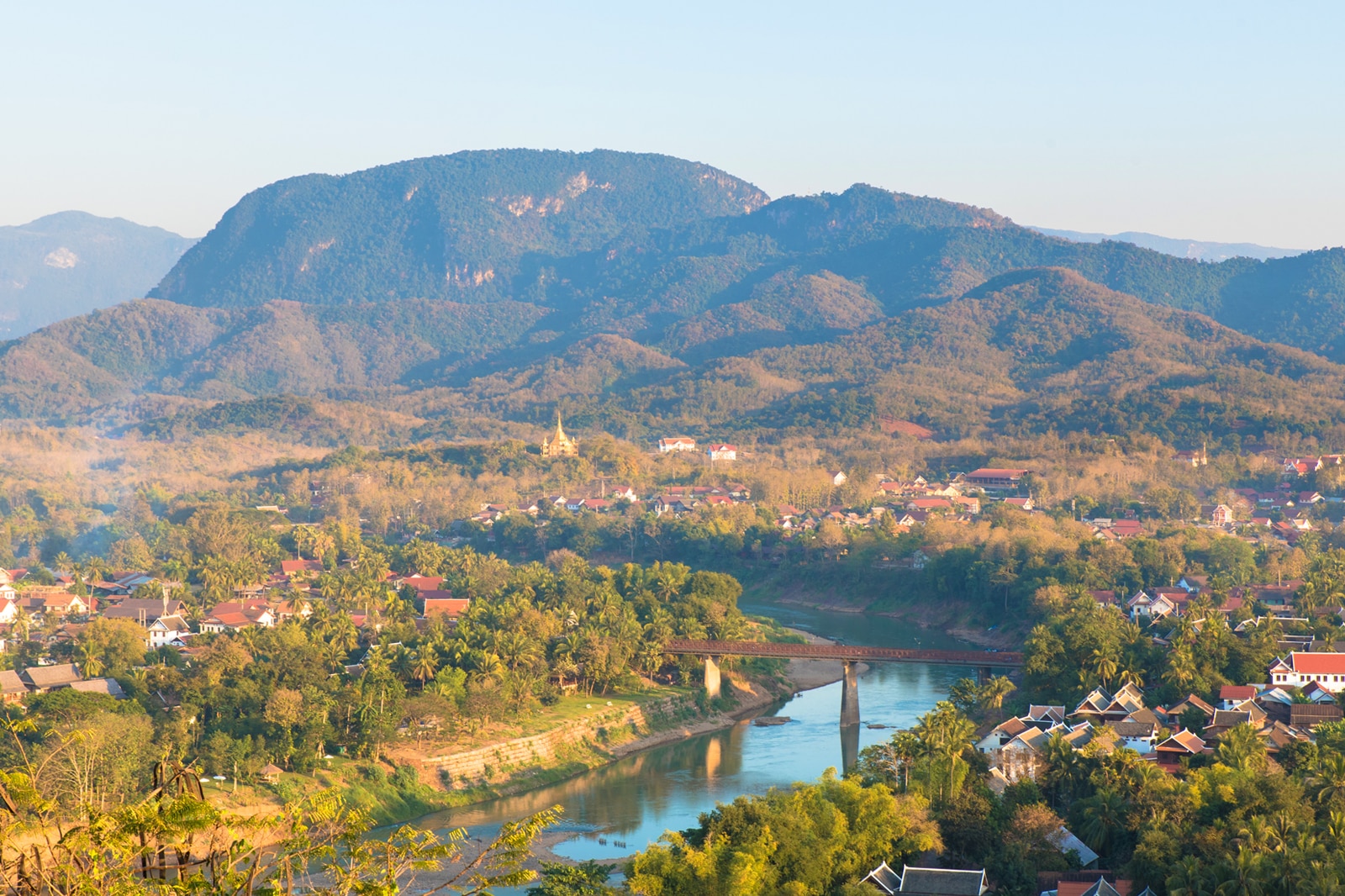
Kuangsi Waterfall
Kuang Si Waterfall is one of the most famous destinations in Luang Prabang. This place makes a strong impression on visitors because of its peaceful beauty with the most beautiful waterfall in the area, 50m high flowing through 3 layers of rock. When coming here, visitors can cool off in the pools below or climb to the top to admire the wonderful surrounding scenery. Please prepare suitable footwear to avoid slipping.

If you're considering visiting Laos in 2023, we hope this travel guide was informative and useful. You will certainly have a nice time there and learn a lot about Laos culture and history via Wat Wisunarat. If you're looking for a dependable and knowledgeable travel company, use Threeland Travel to help you arrange your trip to Laos. We can plan everything from purchasing tickets to making hotel and transportation reservations, depending on your tastes and available budget. Find out more about our fantastic deals and packages by visiting our website or calling us right now. Don't miss the opportunity to travel to Laos with Threeland Travel!








.jpg)


